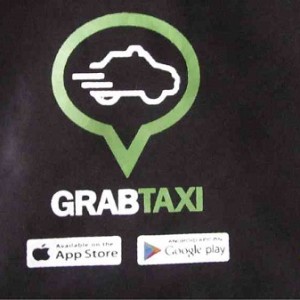It was not your usual press conference. First of all, there was the venue: the K-Pub BBQ Bar in Fort Bonifacio, Metro Manila, which as the young would say is a “cool” place, dark even, with the ambience of a disco club.
Hip-hop, rap or what-have-you music was all over the place, there were strobe lights and there was a giant video in front of the stage, showing promo material. A specially-arranged taxi even took you to the destination, and you took your seat along a long row of tables which gradually began to fill up with media colleagues and other invited guests.
“Wow, we didn’t expect a full house,” gushes one of the organizers. There was even a dazzling show featuring young dancers caparisoned in lights which pierced the darkness.
The event was the launching of the operations of GrabTaxi, Inc. (www.grabtaxi.com), a high-technology system in which the company connects trained taxi drivers with passengers through their smartphones. The system is available in the APP Store, Android App on Google Play. Use the GrabTaxi App of GrabTaxiph.
Present during the press conference were Anthony Tan from Malaysia, GrabTaxi founder and CEO, and holder of an MBA from Harvard University; Natasha Bautista, marketing head, and Brian Cu, director.
Tan says GrabTaxi is aimed at “the rising middle class” in Metro Manila, and indicated it will be brought to the rest of the country in the future. “It started in Kuala Lumpur and we are expanding all around Malaysia,” he says. “We are expanding more and more. There are several thousand bookings everyday. We bring kids to school.”
So why is the Philippines, specifically Metro Manila, the next big destination?
“The usual answer is ‘more fun,’” Tan quips. “But we learned that, one, the population is fast growing, smartphone texting is (popular), and that even kids have mobile phones.”
Explaining the system, Bautista says, “the passenger downloads and we receive this. Hindi natin pinaguusapan kung malayo siya (we don’t ask if the passenger is in a distant place).” The request is turned over to the driver, who has a smartphone
“We have over 1,000 drivers roaming around,” she adds. “We are ready to launch this full-time. We can monitor the driver. There are avenues of complaint in case the driver does (something wrong) or you left your bag.”
Cu opines that “drivers here in the Philippines have the capacity to learn. Just give them a chance. We connect the driver with the passenger. This creates mutual respect. The issue is (the right kind of) environment. Drivers also have their concerns. They ask paano kung may holdup (what if we are held up?).”
The driver works 24 hours every other day and has a cell phone of the passenger.
“He becomes, sort of, your personal driver, so people, drivers and passengers, get very creative,” observes Tan. He adds that another reason for making the Philippines the next big GrabTaxi experiment after Malaysia is that “I personally fell in love with the country, the culture, and the people.”



